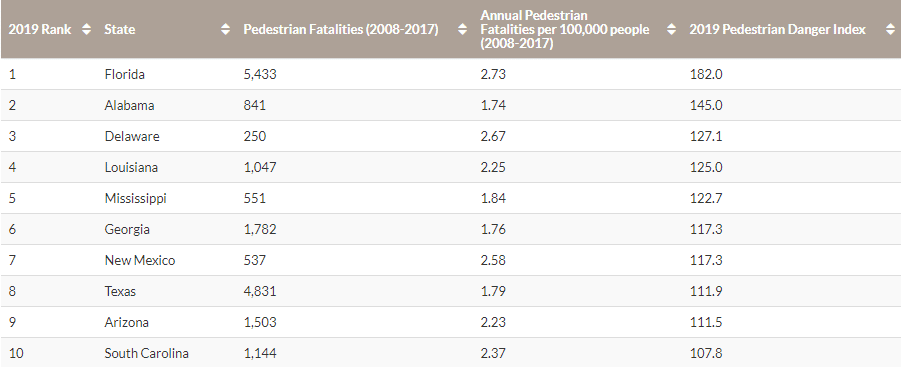Around the world, a shift is underway. Cities are moving away from car-centric policy and design toward a more inclusive approach that enables safe access for all road users, including cyclists, transit riders and pedestrians. This approach is often referred to as Complete Streets.
Despite growing support and implementation at the federal, state and municipal levels—to date, more than 1,325 agencies have adopted complete streets policies—city planners and engineers still have little in the way of theory and methods to guide the design of inclusive roadways and transportation infrastructure (source). Consequently, as we approach 2020, many cities in the U.S. continue to be disturbingly unfriendly to pedestrians.

But there is a solution—or at least a tool that can help. It’s called the Pedestrian Generator Checklist, and it was envisioned by the New York State Department of Transportation (NYSDOT) as a tool to help its engineers identify when and how to accommodate pedestrians when designing roadways.
What is a pedestrian generator?
The concept of a pedestrian generator is relatively straightforward: it’s any location in a city that generates pedestrian activity. According to the American Planning Association, pedestrian generators typically fall into two categories:
- Primary: Locations that indicate the starting point of the initial pedestrian trip, such as parking facilities, train depots and bus stops.
- Secondary: Locations that indicate the destination of the initial and succeeding pedestrian trips which may generate further movement, such as workplaces, schools, hospitals, libraries, retail outlets and parks.
A pedestrian generator can also be something temporary or seasonal, such as a holiday festival or a soccer field. Essentially, it is any location where pedestrians are present and need to be accounted for.
Using the checklist to identify pedestrian generators
While there are multiple ways to go about identifying pedestrian generators—you can review census data, scour aerial photographs, or simply count pedestrians—the Pedestrian Generator Checklist offers a simple way to quickly determine if pedestrian facilities are needed.
The single-page checklist includes 10 yes-or-no questions:
- Is there an existing or planned sidewalk, trail or pedestrian-crossing facility?
- Are there bus stops or transit depots located in or within 800m of the project area?
- Is there more than occasional pedestrian activity?
- Are there existing or approved plans for generators of pedestrian activity within 800m of the project?
- Are there existing or approved plans for seasonal generators of pedestrian activity in or within 800m of the project?
- Is the project located in a residential area within 800m of existing or planned pedestrian generators?
- From record plans, were pedestrian facilities removed during a previous highway reconstruction project?
- Did a study of secondary impacts indicate that the project promotes or is likely to promote commercial and/or residential development?
- Does the community’s comprehensive plan call for development of pedestrian facilities in the area?
- Based on the ability of students to walk and bike to school, would the project benefit from engineering measures under the Safe Routes to School program?
Answering “yes” to any of the questions means the location may be (or may be close to) a pedestrian generator, and therefore facilities geared towards pedestrians should be considered.
Download the complete checklist
Building the case for inclusive infrastructure
Once a pedestrian generator has been identified, the easier it is for city planners and engineers to make the case for infrastructure that benefits them. This may include the addition of sidewalks, crosswalks, bus stops, reduced-speed zones and other traffic-calming measures.
Together with the abundance of proof emphasizing the value of urban walkability—reduced vehicle congestion, lower environmental impact, improved mental and physical health—planners and engineers should have no problem getting their inclusive infrastructure projects approved.
Learn more:
- Download the NYSDOT Pedestrian Generator Checklist
- Check out our walkability resources package
- See how our mid-block crosswalk solutions can make your community more walkable
